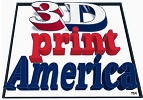Creating a hollow center or pathways in a 3D printed design can enhance its structural integrity and strength. This might seem counterintuitive at first, as removing material could be perceived as weakening the object. However, by optimizing the design and taking advantage of certain principles, you can achieve increase 3D print strength while still reducing material usage.
How hollowing techniques can contribute to added strength:
- Distributed Stress: Hollow structures can distribute stress more evenly across the object. When an external force is applied to an object, the stress is distributed throughout its volume. In a solid object, stress can accumulate at specific points or surfaces, leading to potential failure points. By introducing a hollow design, the stress is spread out more uniformly, reducing the risk of localized failure, which means increase 3D print strength.
- Optimized Material Distribution: In a solid object, material is distributed uniformly throughout, even in areas where it might not be necessary for load-bearing purposes. Hollowing out a design allows you to strategically place material where it’s needed most, reinforcing critical sections. Placing a hollowed structure inside a solid object will cause the slicer to assign walls around the hollowed area, this allows the option to printer interior walls that can act as internal structural beams inside of infill areas. It is not always possible to orientate an object on the print bed to address multiple angles with multiple stress points, by utilizing hollow corridors & structures you gain an additional tool to control filament placement and direction inside these areas. This optimization can enhance the object’s strength-to-weight ratio considerably in addition to increase 3D print strength.
Example of hollow center adding strength by forming interior walls
- Increased Moment of Inertia: The moment of inertia measures an object’s resistance to bending or deformation. Hollow structures can be designed to have a higher moment of inertia compared to solid structures of the same mass. This means they are better equipped to resist bending forces, making them more robust in applications where rigidity is crucial.
- Shell Structures: Hollow designs often resemble shell structures, which can exhibit excellent strength-to-weight ratios. Nature often employs this principle, as seen in structures like bird bones or turtle shells. These natural examples are incredibly strong while being lightweight.
- Lattice and Honeycomb Patterns: When creating hollow design or pathways, you can integrate lattice or honeycomb patterns within the structure. These patterns consist of interconnected beams or hexagonal cells that provide exceptional strength while minimizing material usage. They distribute loads effectively, resulting in objects with increase 3D print strength that can withstand high stresses.
- Layer Bonding: The layer-by-layer nature of 3D printing can lead to directional-dependent strength properties, meaning the strength can vary along different axes or print directions. A well-designed hollow structure can help ensure better bonding between layers, enhancing overall strength in all directions.
- Buckling Resistance: Hollow structures can also be more resistant to buckling, a form of structural failure that occurs under compressive loads. The open space within the hollow design can provide room for deformation without collapsing.
- Filament: In addition to design considerations for hollowing to add strength, selecting the correct filament for this practice is also important. Filament such as Atomic Filament carbon fiber (CF) infused options, their CF PETG PRO filament results in parts that are not brittle like some other CF filament brands. In addition to PETG Atomic Filament has carbon fiber infused PLA, ABS, and Nuclear Nylon. Check them out here.
It’s important to note that the benefits of added increase 3D print strength through a hollow design depend on the specific application, material properties, and the design’s geometry. Not all designs will benefit equally from being hollowed out, and some structures might require internal support structures or reinforcing elements to maintain their intended strength and functionality.
A well-engineered hollow design can offer enhanced strength and structural integrity due to stress distribution, optimized material usage, increased moment of inertia, and the use of efficient patterns like lattices or honeycombs. However, careful consideration, analysis, and testing are essential to ensure that the chosen hollow design truly enhances the intended properties to increase 3D print strength of the object.
May your 3D Journey be sturdy.

